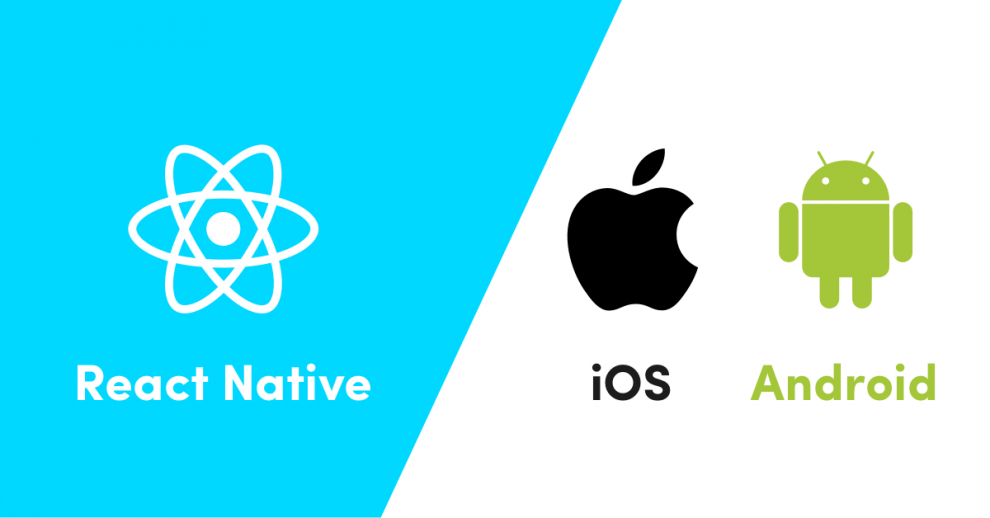Businesses reason out the preference for cross-platform app development as it is free to use, is easy to translate code from CSS, JavaScript, HTML5. All this helps when you want to bring your business into the public eye. Following a systematic approach to mobile app development always helps, so here are the ten basic steps to start with the mobile application development or the cross-platform app development.
- Identify the problem at hand and define your objectives accordingly
- Write down the features and functionality that you want in your application
- Research about your competitors vigorously
- Create Wireframes and Use Cases
- Revise and Test the Wireframes
- Select a Development Path
- Build Your Mobile App
- Test Your Mobile App
- Launch the Mobile App
A full-featured mobile app has the potential to help the business in many different ways:
- Help in increasing the revenue by improving sales or in a way introducing a new revenue stream.
- Improving the engagement, communication and community by letting the audience know about your business
- Increasing brand awareness and enhance your mobile marketing strategy
What Are Cross-Platform Apps Good for?
- Code-reusability: Cross-Platform apps help in running a mobile application on more than one platform.
- Reach: It helps businesses target multiple platforms to maximize their reach.
- Reduced Cost of Development: Creating apps across platforms help in reducing the cost of development as a single-code base can be used to execute the same functionality.
- Easy Maintenance and Deployment: Cross-Platform apps are easy to maintain and deploy. A bug in the codebase can be corrected right there without skipping over to multiple platforms to rectify it.
- Fast Development: It speeds up the development process as writing the code only once can help reduce the development efforts by 50 to 80%.
- Code-reuse: Cross-Platform App Development allows making use of the same code that was written initially, eliminating repetition in the task of creating codes.
- Easy Cloud Integration: Cross-Platform Apps come with plugins and extensions for easy integration across cloud settings. This helps to enhance the app’s capability and scalability further.
- Can Be Customized: Apps for multiple platforms can be customized according to the platform requirements.
- Design Uniformity: Designers are required to build a uniform user interface for an app that will run across multiple platforms.
How Do Native and Cross-Platform Apps Differ?
Performance always remains one major concern during cross platform app development. Native apps do come across with features like high performance, access to new device-specific features, own development environment, consistent UI, better positioning on the stores but the reason to still go for cross-platform app development remains unfazed:
| Differences | Native Apps | Cross-Platform Apps |
| Multiple Platform Deployment Costs | Native Application Development always requires adopting a particular architecture for deploying across multiple platforms. This does cost a bit. | Cross-platform app development can help development teams save at least 80% of the project budget. It does not require any additional investment to deploy across various platforms. |
| Development Time | The app source code is to be written separately for each platform.
Android SDK, iOS SDK have to be used for different projects.
|
The code written once can be used across multiple platforms with some modifications to fit into. This way the code is reusable and reduces the time to market. |
| App Users | The business has less chance to grow if they code for only one platform. | A business gets the double benefit as it can be promoted twice, across different platforms, and amongst a different set of users. |
| Design Challenges | Design and development are supported by the services provided by the OS. | Developers need to add some features specific to the platform explicitly, so the design environment does come across some challenges. |
| Programming Expertise | Native Developers do cost more due to the required expertise and are also difficult to obtain. | Most of the cross-platform tools are web-based, so this makes it easy to find people experts in cross-platform app development. |
So, Can We Convert a Native App into A Cross-Platform App?
To start with, the developers need to follow some basic steps:
Step 1: Select a tool
Select a cross-platform mobile app development tool of your choice like Xamarin, RhoMobile, NativeScript, Kony Mobile Platform, Monocross, Sencha Touch, Appcelerator, FeedHenry, 5app, Titanium, Cocos2d (Cocos2d-x, Cocos2d-JS, Cocos2dXNA, Cocos2d-Swift, Cocos2d (Python)), Codename One, Unity3d, Qt, Corona, SAP, Kony, iFactr, Adobe, Alpha Anywhere and Xamarin etc. Other editors and IDE’s that can be used along with these cross-platform app development frameworks: IntelliJ, Visual Studio, Cocos2D, Qt, MobinCube, AppsMoment, RubyMotion, Ionic, Dropsource, Yapp etc.
Step 2: UI/UX Design
UI developers need to abide by the UI guidelines and are also required to address the design need for diverse platforms. They should be familiar with the functional requirements of each platform.
Step 3: Selecting Reliable Cross-Platform App Modules
Making use of app modules reduces the time to develop and simultaneously gives adequate exposure to native SDKs.
Step 4: Dedicated API Services for Cross-Platform Mobile Apps
Making use of API to deploy platform-specific mobile applications for Android, Apple or even web does work for medium-scale projects or the projects with the same requirements but this might lead to some glitches later. There might be a need to tailor the API service to some specific requirements of the platform.
Step 5: Accommodating Features of Multiple Platforms
It’s not just the development environment or the operating system or the programming language that is different, cross-platform app development does come up with the capability to code for different screen sizes, device attributes and certain platform-specific attributes like screen sizes, navigation metaphors, keyboards, touch and gestures, push notifications; device-specific features like camera, geo-location and maps, accelerometer, gyroscope, compass.
Step 6: Testing and App Store Approvals
The one last and most important step in cross-platform app development is testing. The apps must always be submitted to approval with some margin for error before the “targeted” launch date. This process might not be completely transparent, and the developer might have to deal with both positive and negative feedback. A rigorous app review process to control the quality of the application must be implemented.
How to Convert Existing Native Android App to iOS with React Native?
React Native was initially released in March 2016 and is written in JavaScript, Java, C++, Objective-C, Objective-C++, Python. Right since it acted as an umbrella option to create the best cross-platform apps or to convert native android or iOS app to React Native. If you wish to create two versions of the app for different operating systems, you may start writing the program in React Native or may even consider adding a single view or user flow to existing native applications. With just a few steps, you can add new React Native based features, screens, views etc. Some specific steps can be followed depending upon the type of the platform: iOS (Objective C), Android (Java), iOS (Swift)
iOS (Objective C)
Key concepts to integrate React Native components into your iOS application
- Configure React Native dependencies and directory structure.
- Choose the React Native components that you will use in your application.
- Add these components as dependencies using CocoaPods.
- Build your React Native components in JavaScript.
- Add RCTRootView to your iOS application (container for React Native)
- Start the React Native Server
- Execute the React Native Application
- Test and verify is the functionality of the resultant application is as expected
Prerequisites
Converting an existing Native App into React Native does require some pre-requisites like considering app workflow, design, interaction, inclusion, performance, JavaScript runtime, connectivity, Native Components and Modules etc.
- Set up the directory structure
- Install JavaScript dependencies
- Install CocoaPods
Adding React Native to Your Application
- Setting command Line Tools for Xcode
- Configuring CocoaPods dependencies
- Code integration
iOS to React Native: Process
Step 1: To convert a simple Android App into iOS with React Native, you’ve got to add a splash screen and app icon, then you will have to go through the signing process and finally onto publishing on the App Store.
Step 2: Start with cloning the repo and install all the required libraries. Then you may be able to command it as react-native run-android to deploy to an emulator or attached Android phone, it should work. (I have not mentioned the cloning code here)
Step 3: Then proceed with configuring authentication for your React Native iOS App.
Step 4: Running Your React Native App on iOS Simulator
Step 5: Adjust Styling in Your React Native iOS App
Step 6: Set the Icon and Display Name and Run on a Device
Step 7: Create a Splash Screen for Your React Native iOS App
Step 8: Submit Your React Native App to the iOS Store (Review Guidelines, App Store Connect, build an Archive, add screenshots, consider privacy policy, submit for review)
Cross-Platform App Development: Where Should We Go from Here?
To summarize: (considering the prerequisites mentioned above)
iOS to React Native: Convert iOS App to React Native
- Configure authentication for your React Native App
- Execute the React Native App on the iOS simulator
- Adjust the styling
- Set the app icon, display name
- Run the app on the device
- Create a splash screen
- Submit the app to the app store
Android to React Native: Building an Android App with React Native
- Configure maven
- Enable native modules auto-linking
- Configure permissions
- Cleartext Traffic (API level 28+)
- Integrate Code
- Test your integration
- Create a Release Build in Android Studio
And you may continue developing your react native app as usual. This way you may successfully convert an Android React native App to iOS or vice versa and publish it to the App Store/Play Store. We hope the transition went smoothly.




Add Comment